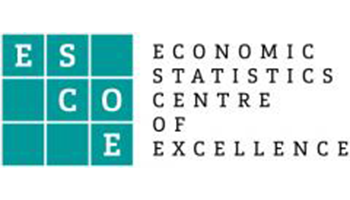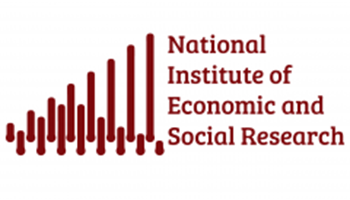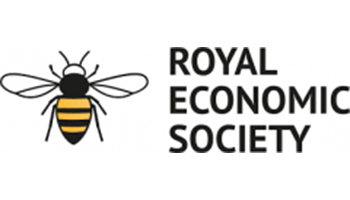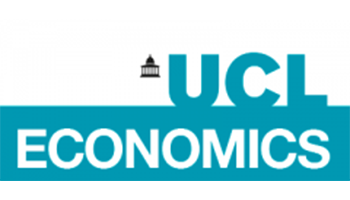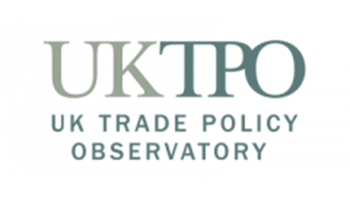The inflation data released in late March 2025 show that UK price growth has slowed slightly. But this relief, largely driven by a surprise fall in clothing costs, is unlikely to last, with impending rises in energy bills and mounting world trade tensions putting further upward pressure on prices.
The UK’s rate of inflation has slowed slightly. In the year to February 2025, the consumer price index (CPI) rose by 2.8% – down from 3% in the year to January (Office for National Statistics ONS, 2025). This was driven by a decrease in the cost of clothing and footwear, with year-on-year prices falling for the first time since 2021, as well as by modest reductions in other ONS categories, including recreation, culture and household goods.
Looking ahead, inflationary pressures could intensify, with energy price cap rises and trade uncertainty likely to push prices higher over the coming months.
Figure 1: Annual inflation, UK and G7
Source: National statistics agencies, author’s calculations.
UK inflation remains joint second highest in the G7, equal to the rate in the United States (2.8%) and behind only Japan (4%). But as it stands, the UK and all G7 countries except Japan are within one percentage point of the standard central bank target of 2% a year. This suggests a stabilisation of prices since the inflationary period that followed the Covid-19 pandemic, when UK price growth peaked at 11% (in October 2022).
Turning back to the latest data, the sharpest downward pressure has come from clothing and footwear, where prices fell by 0.6% in the 12 months to February 2025 (following a 1.8% rise in January). This marks the first negative annual rate in the category since October 2021. Most of this was driven by a large fall in the price of women’s garments, with smaller price drops recorded in women’s accessories, children’s clothing and other apparel.
Lower than expected prices in recreation and culture, household goods and utility bills have also helped to bring down the headline rate. Unlike in January, this month’s data release includes no standout price increases such as school fees or airfares.
Figure 2: Contributors to the 0.2 percentage fall in inflation, by sector
Source: ONS
While these latest figures offer some relief to consumers and firms, the slowdown in price growth is unlikely to last. Inflation is expected to increase throughout 2025, with the Bank of England forecasting CPI to reach 3.7% by the summer (June-September), as a result of increases in regulated price caps for energy and transport. Ofgem, the UK’s utilities regulator, has already raised the energy price cap for typical households from £1,568 in July 2024 to £1,738 in January 2025, with further increases expected next month.
Mounting trade tensions are also casting an increasingly long shadow over the global inflation outlook. While new American tariffs have hit Canada and Mexico the hardest so far, President Donald Trump’s trade policy has since oscillated between escalation and temporary retreat. In a bid to take back what it refers to as ‘stolen wealth’, the administration has increased steel and aluminium tariffs to 25%, and threatened tariffs of up to 200% on some European goods.
This is a concern for policy-makers in Westminster. The United States is the UK's largest trading partner after the European Union, with annual exports to America worth a total of £190 billion – 22% of total UK exports and 7% of GDP. But services dominate this trade, offering possible insulation from Trump’s tariffs on physical goods. The UK ‘ships’ far more financial and legal services across the Atlantic than it does steel and aluminium.
Several competing forces could influence the impact of Trump’s protectionist trade measures on inflation. On the downside, American tariffs could reduce demand for UK exports, both directly and through weaker global trade, slowing inflation. Companies facing uncertainty about trade policies might also delay investments, further dampening economic activity. In addition to this, exporters blocked from the US market may look for alternative buyers and reduce their prices to remain competitive, creating disinflationary pressure.
But countervailing forces could push prices higher. Supply chain disruptions from trade barriers could cause short-term price spikes. And if other countries (such as Canada, China or Mexico) impose retaliatory tariffs, the resulting trade fragmentation could lead to costly supply chain reorganisation, temporarily reducing global supply capacity and increasing prices.
Longer-term risks also loom. A broader retreat by the United States from global trade could reduce competition and knowledge transfer between economies, potentially constraining productivity growth and the UK economy's supply capacity. How the Bank of England’s Monetary Policy Committee (MPC) responds to these pressures will depend heavily on which forces prove dominant in the months ahead.
Looking ahead to the next CPI release, further increases in regulated energy prices could add to headline inflation, while global trade developments – particularly any further escalation in tariffs – may start filtering through to import costs. Whether these pressures materialise will depend on how governments, businesses and consumers react, and how global supply chains adjust in the face of growing trade uncertainty.
While UK inflation has eased slightly this month, and remains close to the MPC’s 2% target, looming price pressures suggest it may not stay there for long.
Where can I find out more?
February’s surprise fall in clothing prices helped to push down inflation. Read more about the economics of fashion and clothing in the Economics Observatory’s ‘fashion week’ series.
- How did fashion grow into a global business? José Antonio Miranda and Alba Roldan chart the industry’s growth over the past 200 years.
- Fast fashion: what are the true costs? Elaine Ritch investigates the social and economic costs of cheap, low-quality clothes.
- How does fast fashion affect the environment? Policy-makers could promote a fashion circular economy to reduce the industry’s damage, suggests Xiaoyang Long.
Recent trade tensions have thrust the relationship between tariffs and inflation into the spotlight.
- What could higher US tariffs mean for the UK economy? UK exports could decline by up to £22 billion says a new NIESR report, ‘Implications of Higher US Tariffs for the UK Economy’, from December of last year.
- The Bank of England’s February Monetary Policy Report sets out its forecasts for inflation and other key economic metrics.
- Trump has blamed trading partners’ high VAT rates for the US trade deficit. Is VAT trade neutral? This explainer from the IFS and ODI Global digs into the evidence.
Find out more about inflation from the Economics Observatory:
- What are the links between job vacancies, unemployment and inflation? Read Fergus Jimenez-England on the links between the labour market and inflation, and the puzzle of why unemployment has remained historically low despite rising interest rates.
- What are the future prospects for UK inflation? In June 2024, Huw Dixon explored what falling inflation means for the future amid domestic and global risks.
- Can artificial intelligence help us to measure inflation? Economics Observatory research into how AI tools can improve the speed, cost and breadth of inflation measurement.









